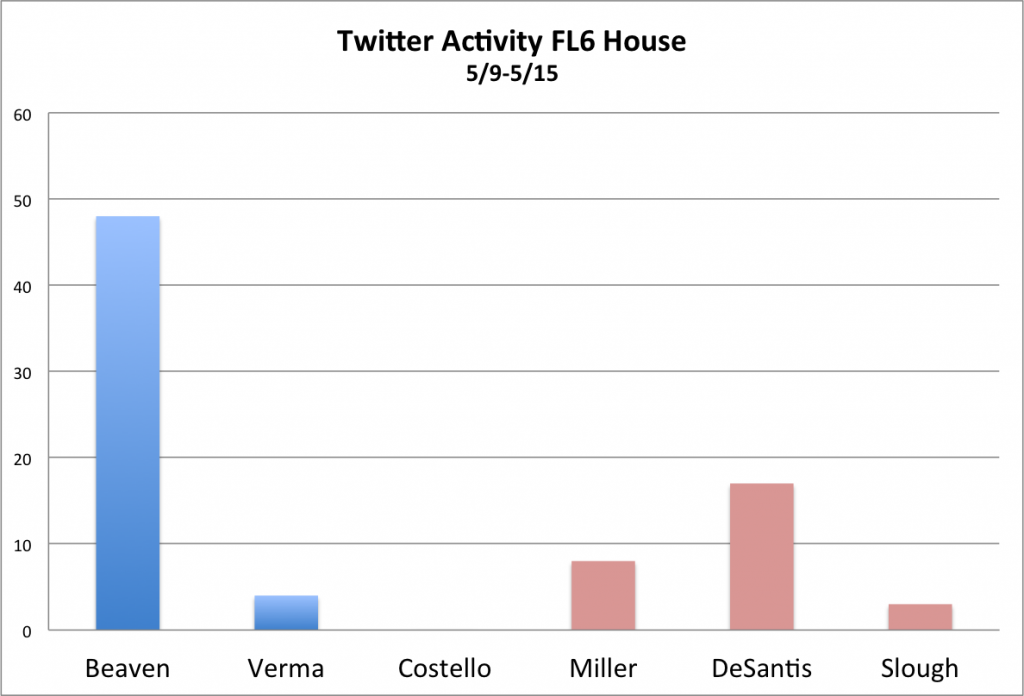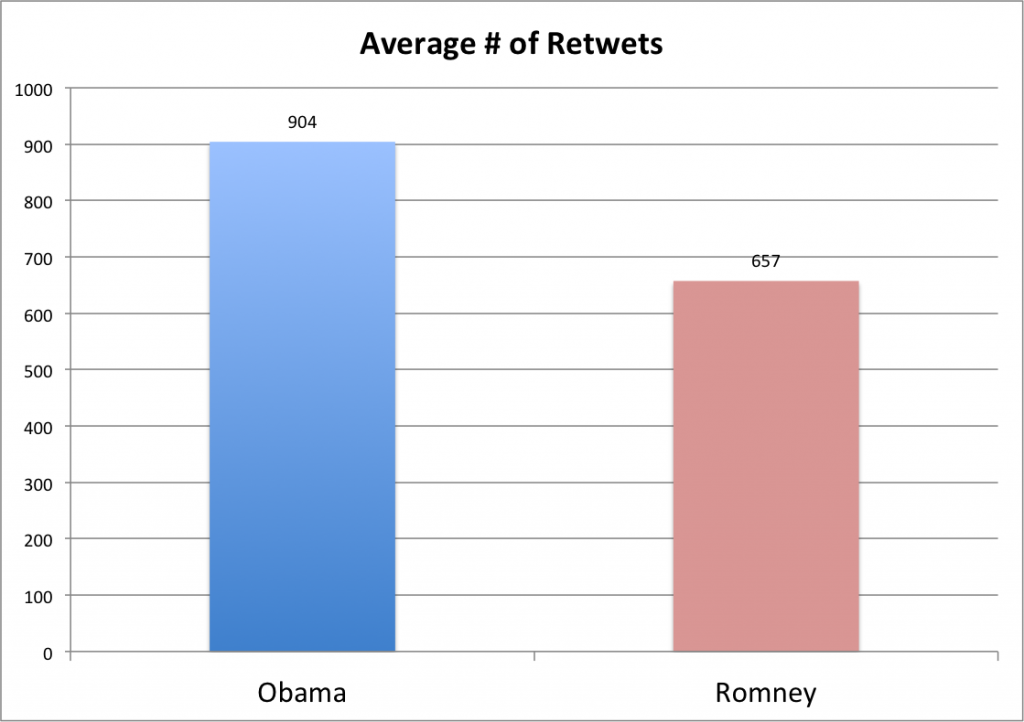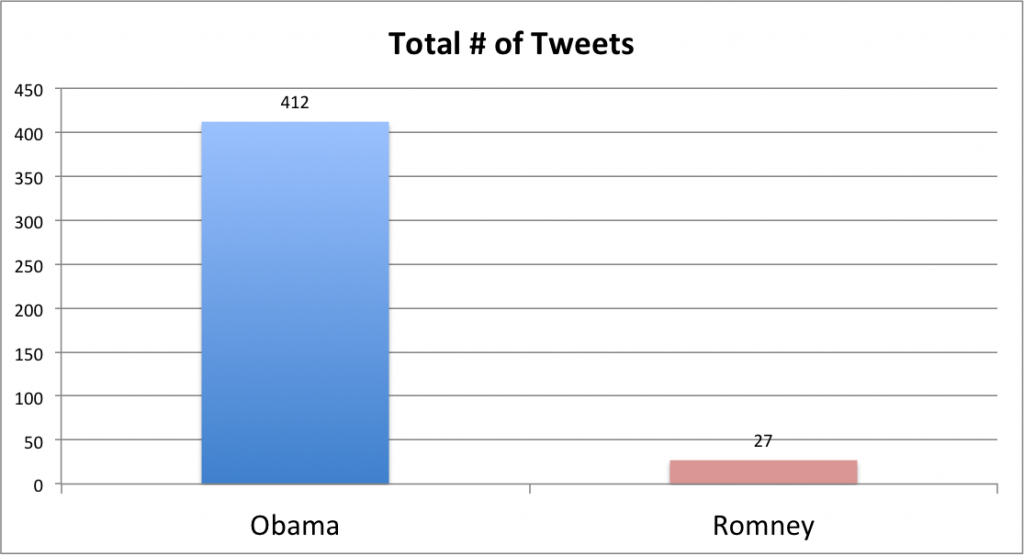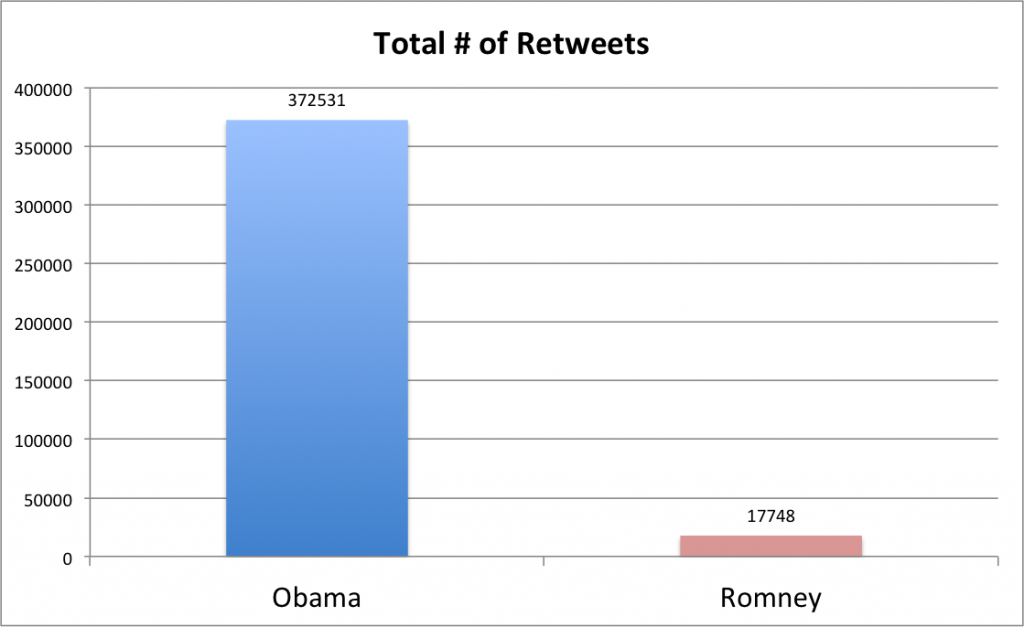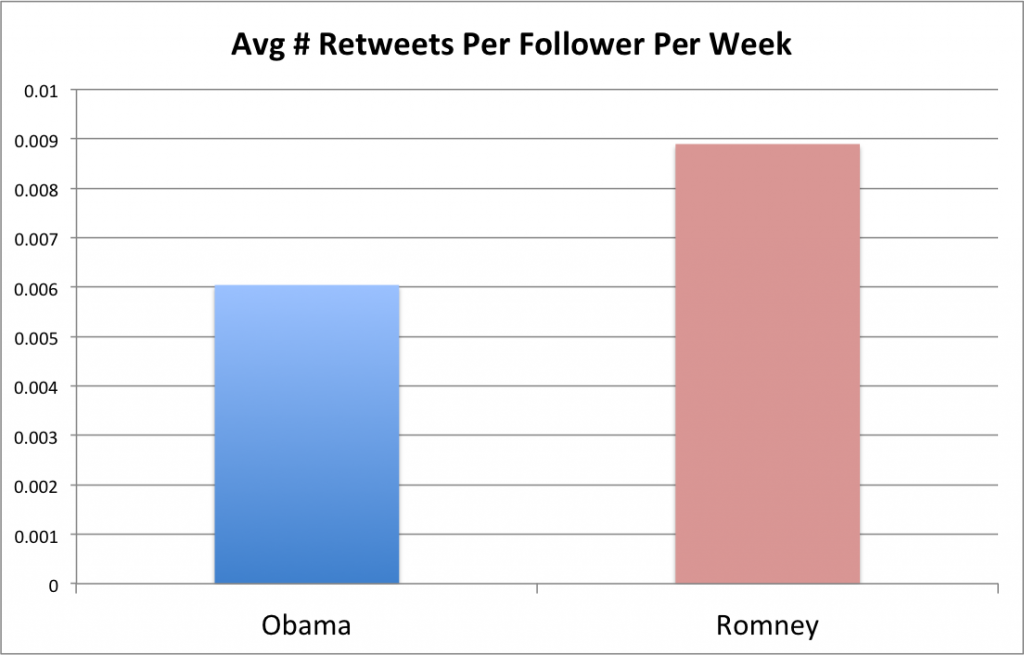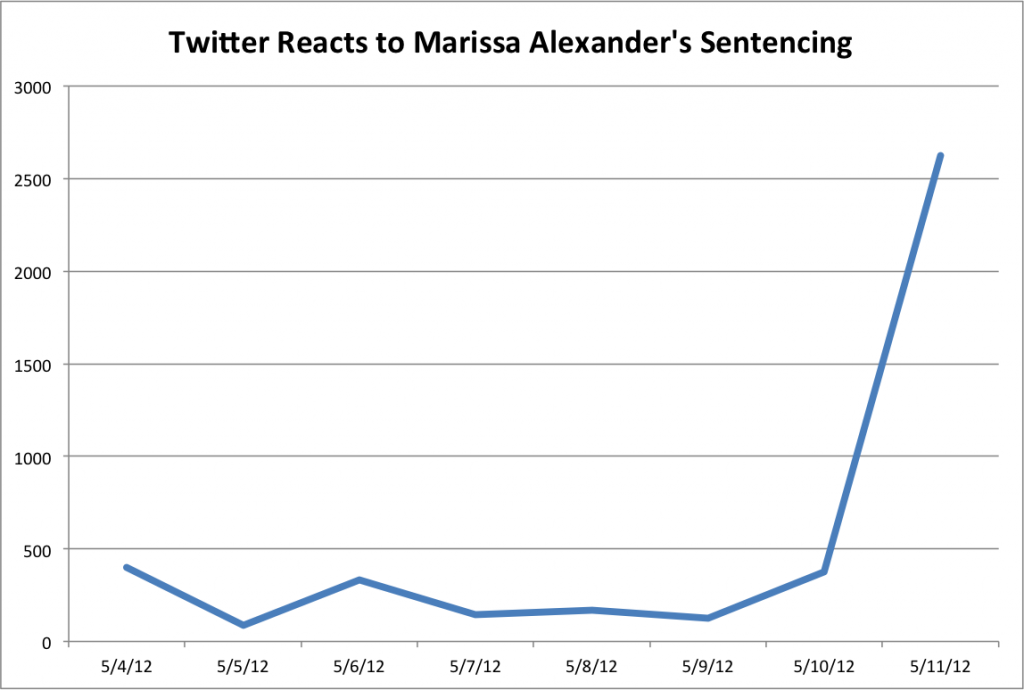You will find endless advice on the Internet on the art of writing a tweet that will catch the eye of your audience, all focused on how to find the right way to say what you want. But there’s another, more mechanical aspect of writing a tweet, one that relates to not what is said, or how you say it, but the structure of the tweet itself.
Mechanically speaking, when you are writing a new tweet that you hope to have re-tweeted, there are four important things to consider:
- How long is your text?
- How many hash tags should you use?
- How many other Twitter users should you reference?
- Should you include a URL?
I looked at roughly 100,000 recent tweets and 100,000 recent re-tweets on Twitter to see if I could discover any pattern to them and, hopefully, some guidance that can be used in crafting the perfect tweet.
First up — how long should your tweet be? For most of us, the challenge in Twitter is getting our tweets to fit in the 140-character limitation. My first draft of a tweet tends to be way over the limit, and the editing process consists of removing words, rephrasing things, and using short-cuts (like “&” instead of “and”) to get the length below the limit. And this results in tweets that are close to 140 characters in length.
And when you look at the distribution of typical tweet (but not re-tweet) lengths, what you see is pretty much that:
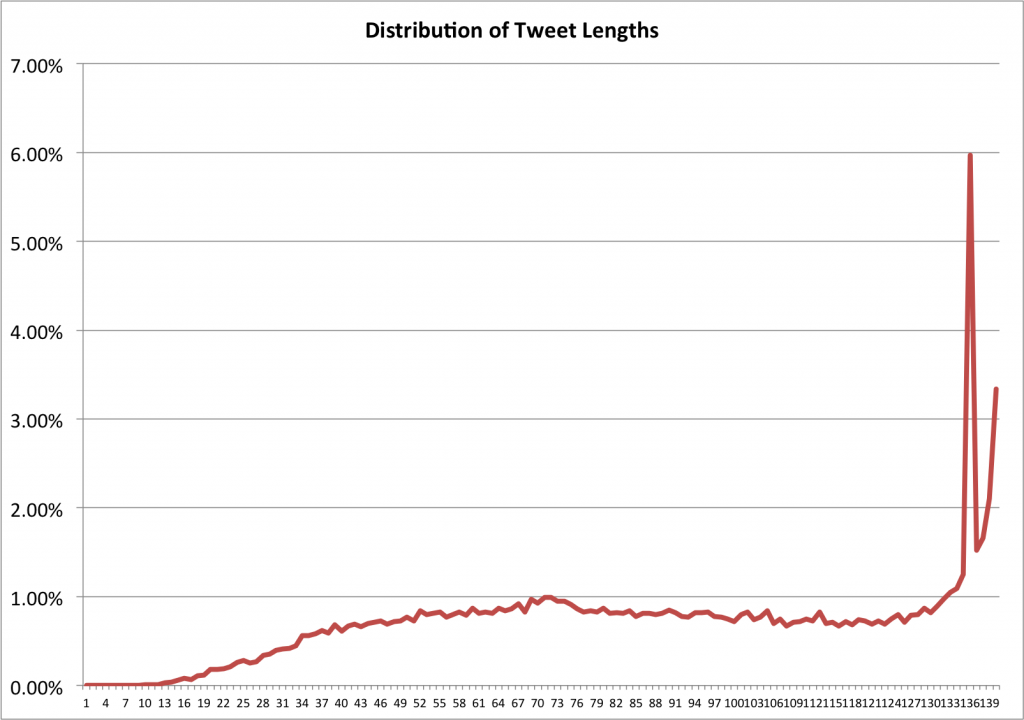
Click on Image to Enlarge
Once you hit about 60 characters in length, the percentage of tweets remains fairly flat until 135 characters, where it takes a sharp rise — that’s the zone where people just can’t fit another word in. About 20% of all tweets are in the 131 to 140 character range.
But does maxing out your text produce a tweet that will be re-tweeted? Here’s a chart that shows the likelihood of a re-tweet by length of tweet:
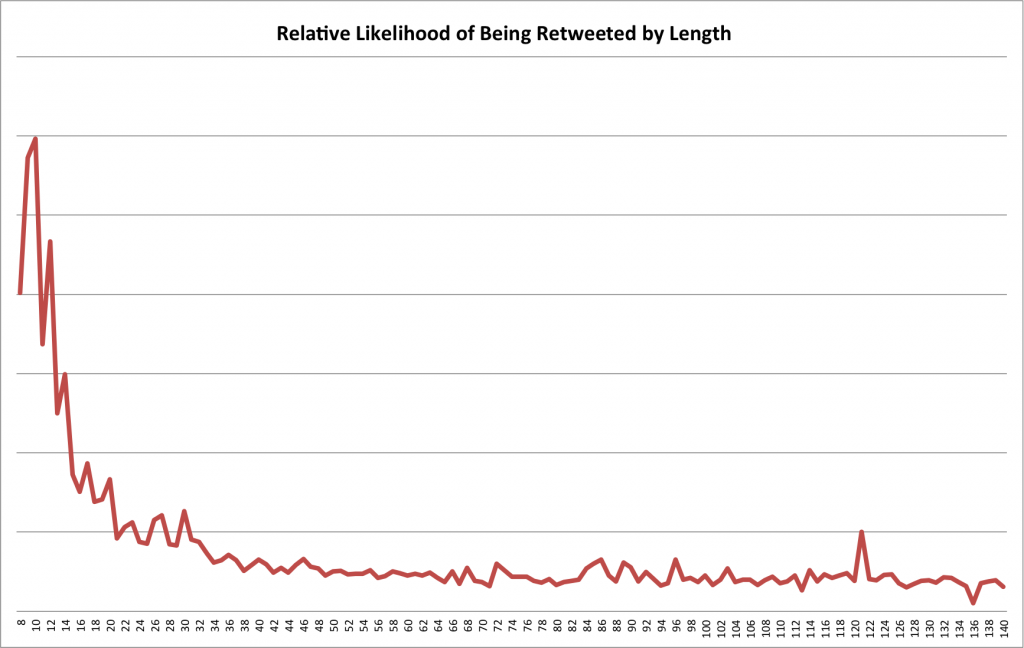
Click to enlarge
This is almost the inverse of the average tweet lengths!
We can see, pretty dramatically, the probability of a tweet being re-tweeted drops as the tweet gets longer, until around 36 characters or so when it starts to level out. Short tweets get re-tweeted! Even holding tweets to around 30 characters is a dramatic improvement over adding just another word!
So if the ideal tweet is pretty short, what does that mean about hash tags? Here’s a distribution of re-tweets by the number of hash tags in them:
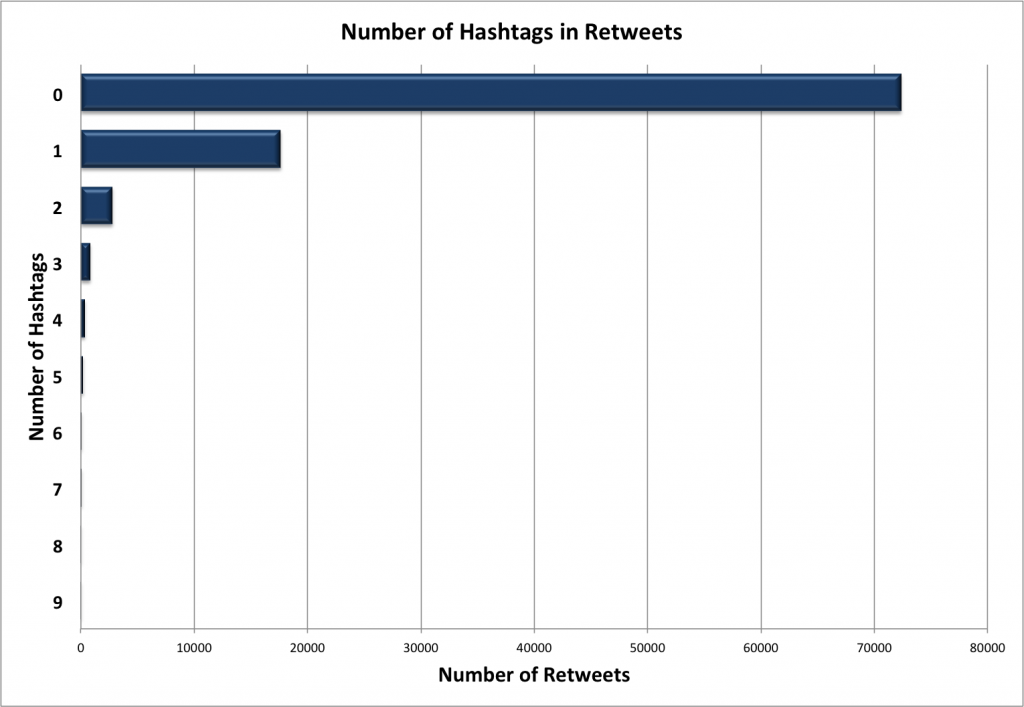
Click to enlarge
And as we would expect from the dominance of short re-tweets, the number of hash tags is usually none, and occasionally one. I’ve seen advice that suggests people use no more than two hash tags in a tweet, and this definitely bears that out.
If you look at the number of @references that people make in their tweets that are re-tweeted, the chart looks virtually the same. Zero is very popular, one is OK, and over that drops off the list.
Now, to the last question: Should you include URLs in your tweets? My natural inclination was yes, always, because that’s my call to action. But lets see how that works with tweets and re-tweets. Here’s the percentage of original (non-re-tweet) tweets that have URLs:
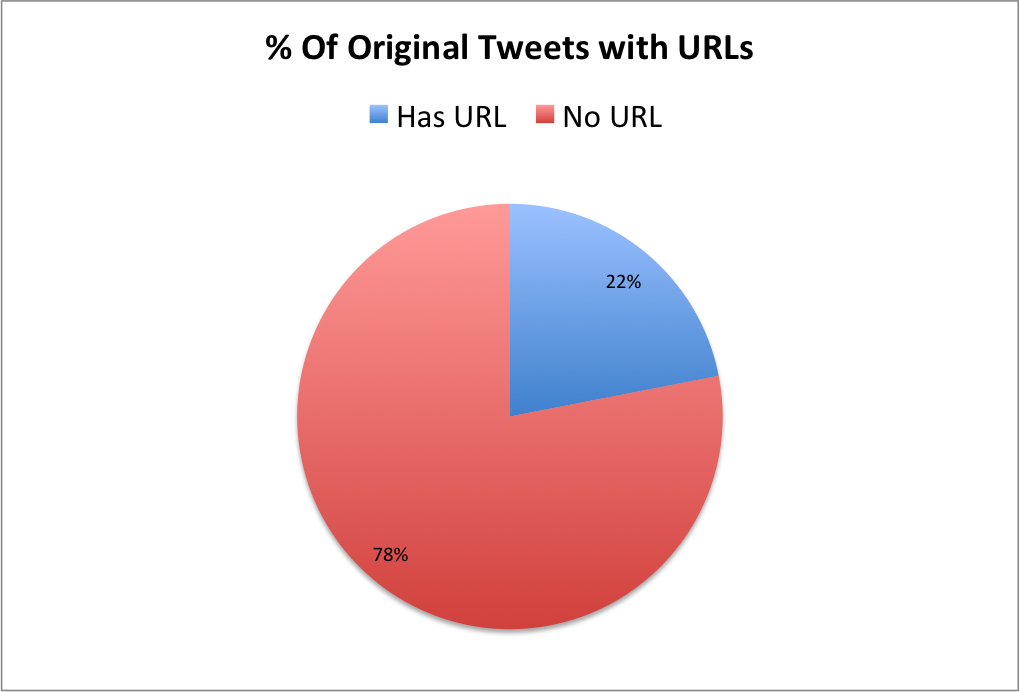
Click to enlarge
And here’s the percentage of re-tweets that have URLs:
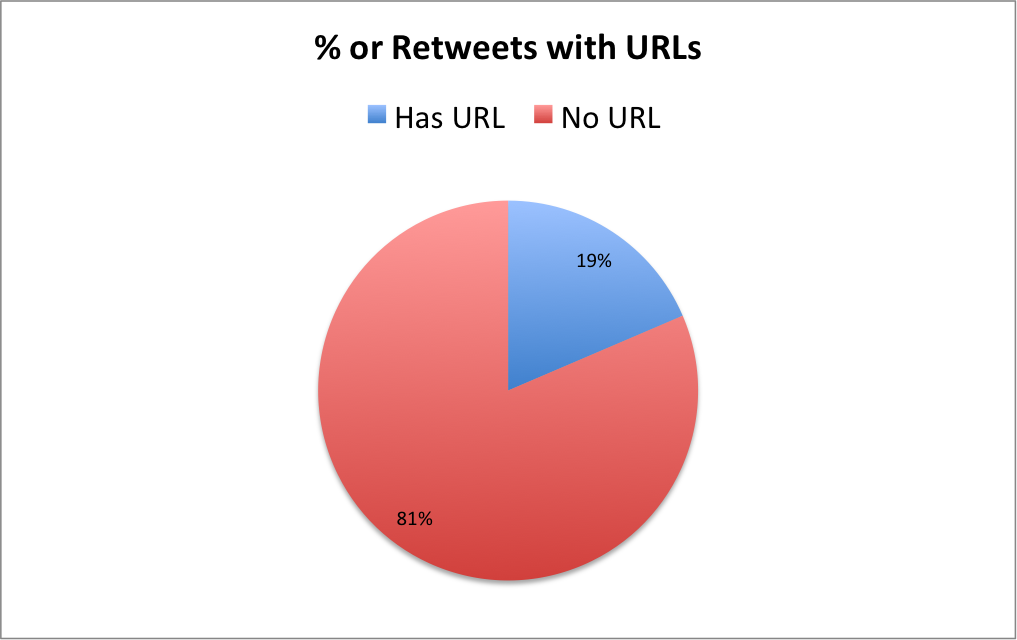
Click to enlarge
We can see that re-tweets tend to slightly favor tweets without URLs, probably driven by the inclination people show to re-tweet short tweets.
For those of us who like to cram every last bit of information possible into a Tweet (and that’s me!), these statistics present a challenge. Long tweets with lots of hash tags, references, and URLs just don’t generate the kind of engagement we’d like. People often describe Twitter’s limit of 140 characters as being constraining, but the practical limits are even worse.
At the end of the day, you can’t prune so many words out of your content that you shear it of meaning. But there is still some advice I can give:
- Have one simple idea per tweet. Don’t try to cram more in. Words like “and” or “or” are dead give-aways that you’re putting multiple ideas in a tweet; you should split it up into two or more tweets.
- If you have problems coming up with enough tweets to meet your goal, this is your chance to take one idea and play it out over several tweets.
- But don’t spread a paragraph across multiple tweets. You’ve seen people who write an essay in twitter and just break it up into 140 character chunks. It’s hard to follow, and nobody will re-tweet an essay.
- Adding a URL is not terribly harmful by itself — but it takes up space in your tweet.
- Try to use one hash tag at most.
Remember, though, nobody re-tweets you because you’ve kept your length to 27 characters. They re-tweet you because you have written something compelling. Start with great content, and then use these guidelines to produce the very best tweet you can. You’ll maximize your chances of being re-tweeted, and maximize your engagement with your audience.



